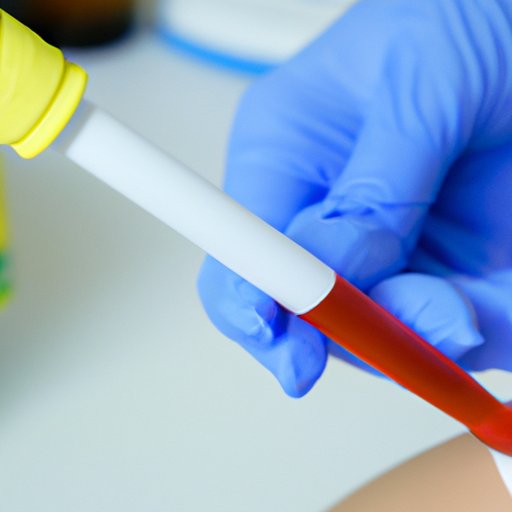
Introduction
A blood clot occurs when blood thickens and clumps together, forming a gel-like substance. This can happen within veins or arteries, and can lead to a variety of complications if not detected and treated early. Knowing how to detect the warning signs and take preventative measures can help protect your health and potentially even save your life.
Symptoms and Risk Factors
It is important to be aware of the symptoms that could indicate the presence of a blood clot, such as swelling, pain or tenderness, warmth, and redness in the affected area. Additionally, if you experience sudden shortness of breath, chest pain, or rapid heartbeat, seek medical attention immediately as this could indicate a pulmonary embolism, a life-threatening condition caused by a blood clot that has traveled to the lungs.
Several risk factors can increase the likelihood of developing blood clots, including advanced age, obesity, pregnancy, smoking, and certain medical conditions such as cancer or heart disease. Inactivity, such as prolonged periods of sitting or standing, can also increase the risk of blood clots.
Prevention Tips
There are several methods to decrease the likelihood of developing blood clots, such as staying active and engaging in physical activity, maintaining a healthy diet, staying hydrated, and avoiding sitting or standing for long periods of time without taking breaks to move around. Wearing compression stockings, taking prescribed medications or blood thinners, and avoiding smoking and excessive alcohol consumption can also help prevent blood clots.
Diagnostic Tests
If you suspect the presence of a blood clot, it is important to seek medical attention immediately. Diagnostic testing options to detect blood clots may include ultrasounds, blood tests, or imaging tests such as CT scans or MRIs. These tests can help determine the location and severity of the blood clot.
Treatment Options
The treatment approach for a blood clot depends on several factors, including the location and severity of the clot, as well as the patient’s overall health. Common treatments for blood clots include medications such as blood thinners, clot-dissolving drugs, or surgical procedures such as thrombectomy or angioplasty.
Recovery Time
The recovery time for a blood clot can vary depending on the treatment approach, severity of the clot, and overall health of the patient. In general, it can take several weeks to several months for a full recovery after treatment. It is important to follow a doctor’s orders, take prescribed medications, and attend follow-up appointments to ensure continued monitoring and care.
Helpful Resources
If you are seeking additional information on blood clots, there are several resources available to help you learn more about the symptoms, risk factors, and treatment options. The National Blood Clot Alliance, American Heart Association, and Centers for Disease Control and Prevention are all excellent sources for information and support.
Conclusion
Early detection and prevention are critical for managing blood clots and protecting your overall health. Being aware of the symptoms, risk factors, and prevention tactics can help you take action before serious complications arise. If you suspect the presence of a blood clot, seek medical attention immediately to ensure the best possible outcome.




